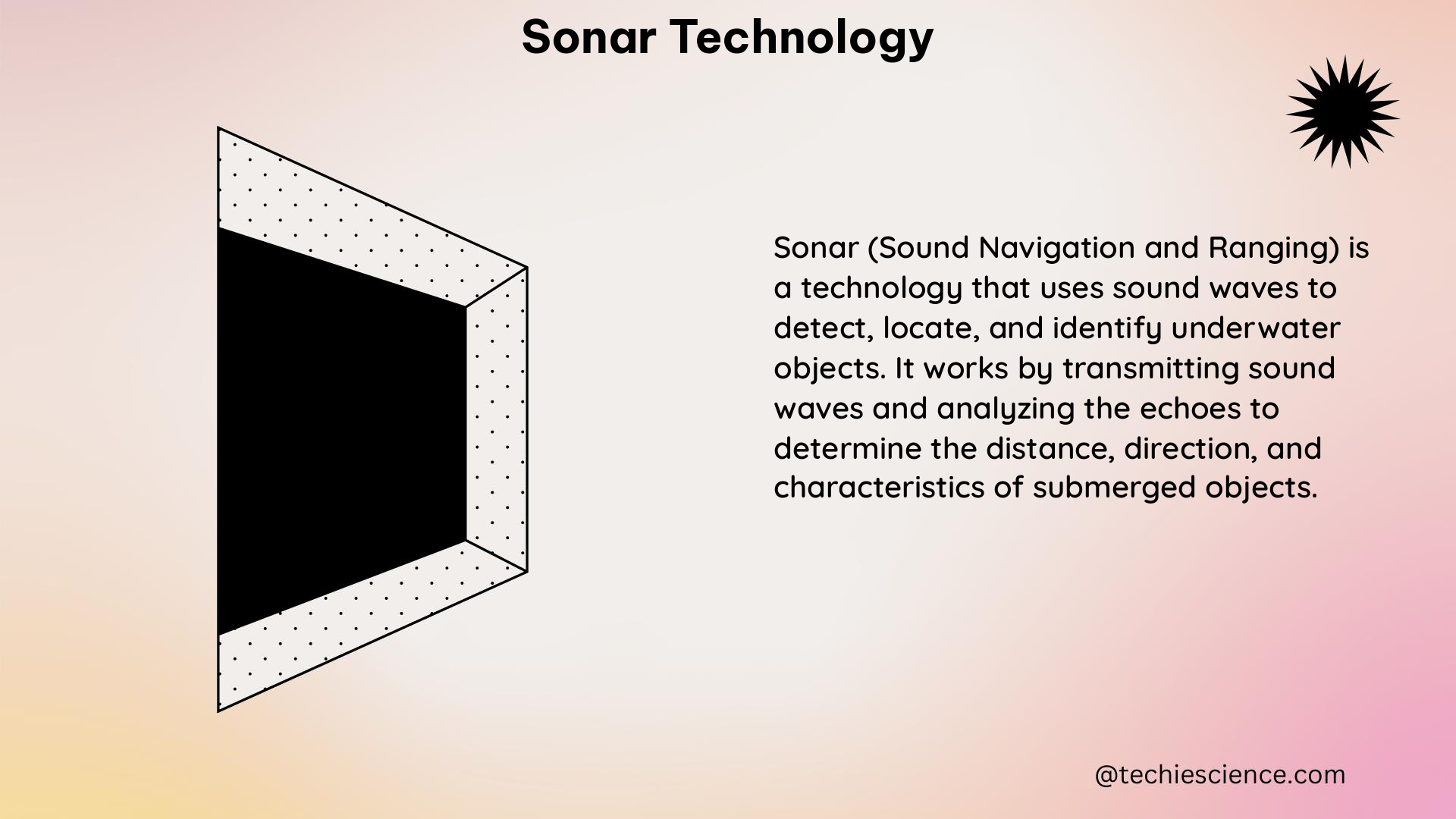Sonar technology, or Sound Navigation and Ranging, is a powerful tool used to detect and locate objects underwater by transmitting and receiving sound waves. This technology has a wide range of applications, from marine research and military surveillance to underwater construction and exploration.
Understanding the Fundamentals of Sonar Technology
Sonar technology relies on the propagation of sound waves through water. These sound waves are generated by a transducer, which converts electrical energy into mechanical energy, creating vibrations that travel through the water. When the sound waves encounter an object, they are reflected back to the sonar system, and the time it takes for the waves to return is used to calculate the distance to the object.
Physics of Sonar Waves
The physics of sonar technology involves the behavior of sound waves in water. Sound waves are longitudinal waves, meaning they propagate through a medium by the compression and rarefaction of particles. The speed of sound in water is approximately 1,500 meters per second, and the wavelength of a sound wave is inversely proportional to its frequency.
The formula for calculating the distance to an object using sonar is:
distance = (speed of sound in water × time) / 2
where time is the time it takes for the sound wave to travel to the object and back.
Types of Sonar Systems
Sonar systems can be classified into two main categories: active sonar and passive sonar.
-
Active Sonar: Active sonar systems emit sound waves and measure the time it takes for the waves to reflect off an object and return to the sonar system. This allows the system to determine the distance and location of the object.
-
Passive Sonar: Passive sonar systems do not emit sound waves but instead listen for sounds generated by other sources, such as the noise made by a submarine or a school of fish.
Within these categories, there are various sonar techniques, including:
- Side-Scan Sonar: Uses a narrow beam of sound to scan the seafloor, creating detailed images of the underwater environment.
- Multibeam Sonar: Uses a wider beam of sound to create more detailed and comprehensive images of the seafloor and underwater objects.
- Synthetic Aperture Sonar: Combines multiple sonar pings to create high-resolution images of the seafloor and underwater objects.
Sonar Imaging Techniques
Sonar technology can be used to create detailed images of the underwater environment, known as sonar images. These images are created by sending out a sound wave and measuring the time it takes for the wave to bounce back and return to the sonar device. The strength and direction of the returning wave are then used to create an image of the object or environment that the wave encountered.
Sonar images can be combined with other data, such as bathymetric data, to create detailed maps of the underwater environment. These maps can be used for a variety of applications, including marine research, military surveillance, and underwater construction.
Sonar Technology Applications

Sonar technology has a wide range of applications, including:
- Marine Research: Sonar is used to study the seafloor, map underwater environments, and detect schools of fish.
- Military Surveillance: Sonar is used to detect and track submarines, ships, and other underwater objects.
- Underwater Construction: Sonar is used to map the seafloor and locate underwater obstacles before construction projects.
- Underwater Exploration: Sonar is used to locate and explore shipwrecks, sunken treasure, and other underwater objects.
Physics Examples of Sonar Technology
- Detecting Schools of Fish: Sonar can be used to detect and track schools of fish, allowing fishermen to locate and target their catch more effectively.
- Mapping the Seafloor: Sonar can be used to create detailed maps of the seafloor, which are essential for understanding the underwater environment and planning underwater construction projects.
- Locating Underwater Objects: Sonar can be used to locate and identify underwater objects, such as shipwrecks or sunken treasure, which can be of great historical and scientific interest.
Physics Numerical Problems
- Calculating Distance to an Object: Using the formula
distance = (speed of sound in water × time) / 2, calculate the distance to an object if the sound wave takes 2 seconds to travel to the object and back. - Determining Frequency and Wavelength: If a sonar system operates at a frequency of 50 kHz and the speed of sound in water is 1,500 m/s, what is the wavelength of the sound wave?
Conclusion
Sonar technology is a powerful and versatile tool that has a wide range of applications in various fields, from marine research to military surveillance and underwater exploration. By understanding the fundamental physics principles that underlie sonar technology, physics students can gain a deeper appreciation for this technology and its practical applications.
References:
– “The capacity of imaging sonar for quantifying the abundance of reef fishes”
– “Sonar Image – an overview | ScienceDirect Topics”
– “A Detailed Study of Sonar Tomographic Imaging – DTIC”
– “Quantifying the ability of imaging sonar to identify fish species at a subtropical artificial reef”
– “Quantifying the ability of imaging sonar to identify fish species at a subtropical artificial reef”

The lambdageeks.com Core SME Team is a group of experienced subject matter experts from diverse scientific and technical fields including Physics, Chemistry, Technology,Electronics & Electrical Engineering, Automotive, Mechanical Engineering. Our team collaborates to create high-quality, well-researched articles on a wide range of science and technology topics for the lambdageeks.com website.
All Our Senior SME are having more than 7 Years of experience in the respective fields . They are either Working Industry Professionals or assocaited With different Universities. Refer Our Authors Page to get to know About our Core SMEs.